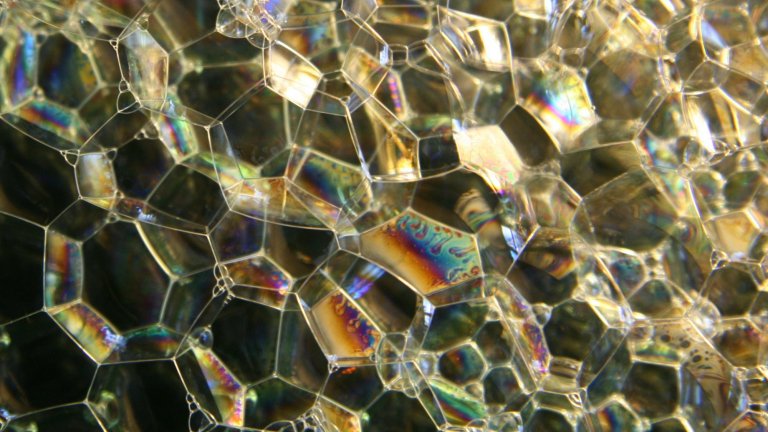
© Valentin LEROY / Université Paris Diderot / CNRS Images
View the mediaFolder
Matter on a macroscopic scale still holds many discoveries in the field of soft matter, new materials (graphene, metamaterials, etc.) and the study of collective behaviour (active matter).

© Valentin LEROY / Université Paris Diderot / CNRS Images
View the mediaSo-called “soft matter” encompasses a wide range of materials such as liquid crystals, gels, foams and polymers. They can also include granular materials. Unlike ordinary liquids, all of these materials exhibit unique physical properties resulting from the molecules being organised on a scale larger than the atomic scale. Liquid crystals, for example, which are widely used in the screens of our electronic devices, have remarkable optical and electrical properties. Gels are equally remarkable, being highly deformable and able to contain substances that can be released and, in some cases, even change shape in response to external stimuli, which opens the door to applications in fields as varied as biomedicine, and robotics.
New materials have been discovered or are being produced in the laboratory that exhibit unusual physical properties. One of the best-known examples is graphene, a monatomic sheet of carbon that has exceptional electrical conductivity. Graphene has attracted significant interest due to its potential in the fields of electronics, energy and composite materials. Another example is metamaterials: artificial structures designed to exhibit unusual optical or electromagnetic properties, often difficult to find in natural materials. A strong theoretical component is also being developed to design materials with this or that property using digital simulations.
“Active matter” is another area of research in macroscopic physics. It brings together systems where individual elements (atoms, molecules, living organisms, robots, etc.) can move and interact with each other. Their collective, ordered behaviour arises from local interactions rather than from an external force. A good example is a flock of birds in flight or a school of fish in coordinated movement. These systems are studied in various fields and have applications in modelling crowd behaviour, self-assembly, and the development of robots that can interact with humans (social robotics).
Marvel at the field of matter and materials by browsing the images and videos produced in the CNRS laboratories.
Keywords: matter, materials, soft matter, active matter, graphene, metamaterials, material design
Our work is guided by the way scientists question the world around them and we translate their research into images to help people to understand the world better and to awaken their curiosity and wonderment.